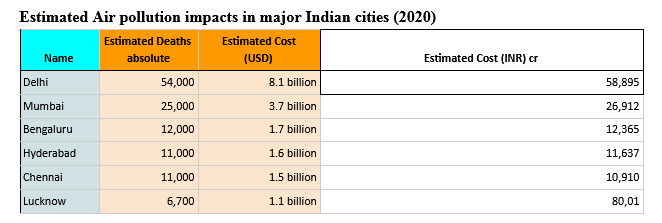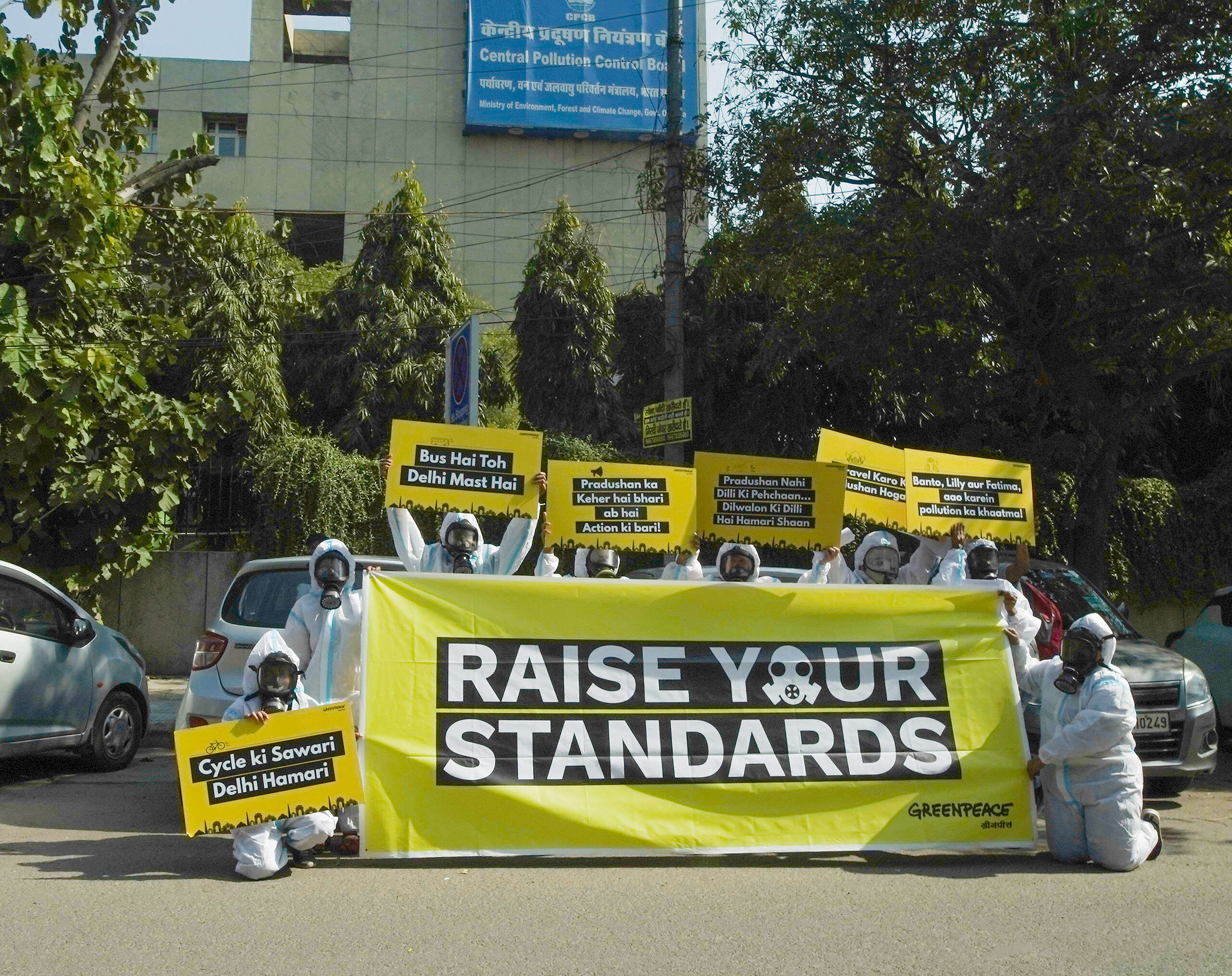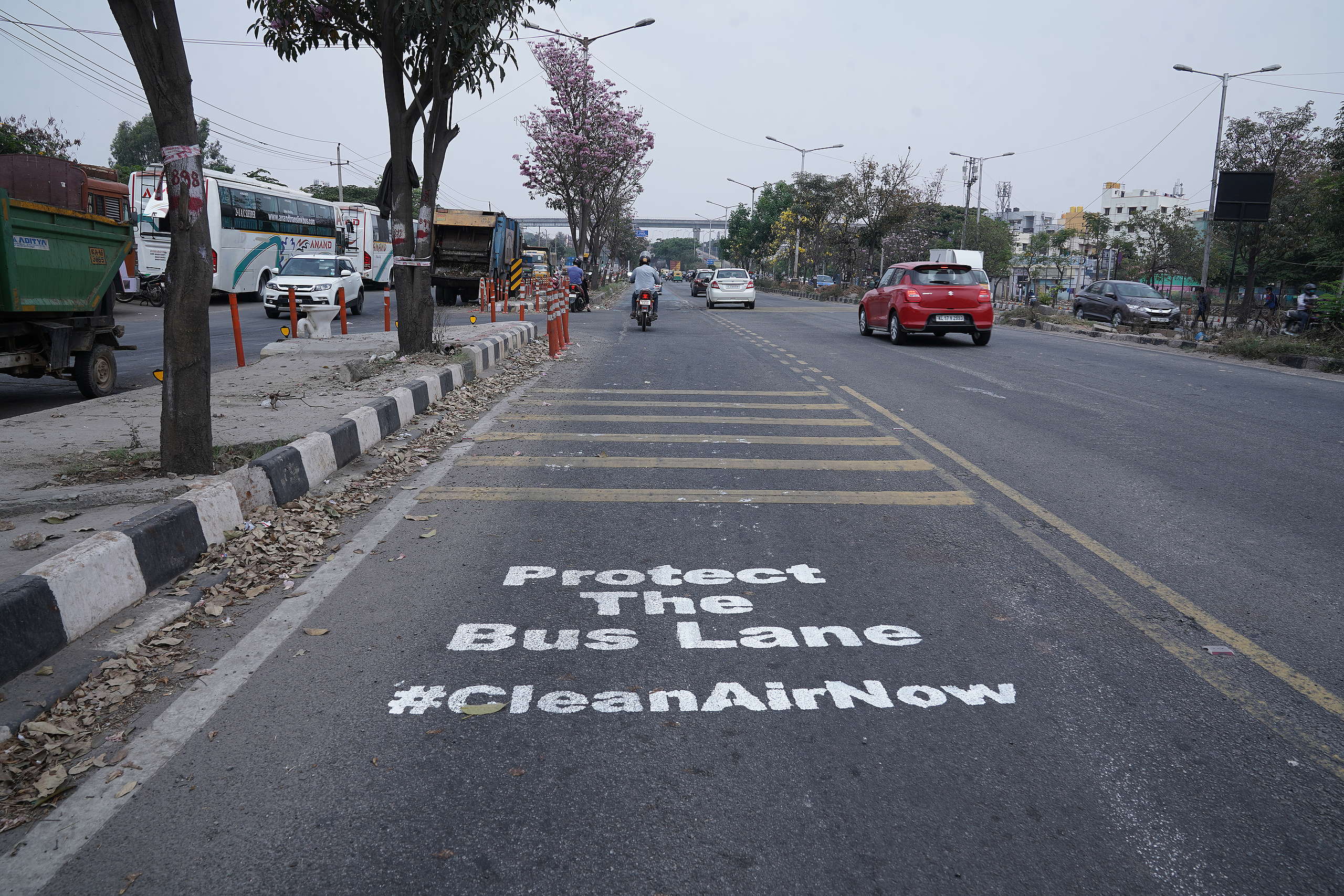New Delhi, 18 Feb 2021 – According to a Greenpeace Southeast Asia analysis of IQAir data from a live Cost Estimator [1] [2] and uses live air quality data collected by IQAir, PM2.5 air pollution claimed approximately 54,000 lives in India’s national capital in 2020. Globally, approximate 160,000 deaths have been attributed to PM2.5 air pollution in the five most populous cities. A cost estimator is an online tool that tracks the real-time health impact and economic costs of air pollution in major world cities. To show the impact of air pollution related deaths on the economy, the approach used by Greenpeace is called “willingness-to-pay”, a lost life year or a year lived with disability is converted to money by the amount that people are willing to pay in order to avoid this negative outcome.
Despite a temporary reprieve in air quality owing to the lockdown, the latest figures from the report underscore the need to act immediately. The need of the hour is to rapidly scale up renewable energy, bring an end to fossil fuel emissions and boost sustainable and accessible transport systems.
The cost estimator also sustained the estimated air pollution-related economic losses of 8.1 billion USD (58,895 crore), which amounts to 13% of Delhi’s annual GDP. Air pollutant levels in Delhi remained almost six times above the prescribed WHO limits of 10 μg/m3 annual mean.
The damage is equally worrying in other Indian cities. An estimated 25,000 avoidable deaths in Mumbai in 2020 have been attributed to air pollution. Bengaluru, Chennai, Hyderabad and Lucknow estimated an approximate 12000, 11000, 11000, and 6700 avoidable deaths respectively due to polluted air.

“Despite recording relatively better air quality this year due to strict lockdown, air pollution continues to be a serious public health issue which also drastically impacts our economy. For the governments of the day, it is crucial that investments are made towards green and sustainable solutions. When we choose fossil fuel over clean energy, our health is put at stake. Polluted air increases the likelihood of deaths due to cancer & stroke, spike in asthma attacks and worsens severity of COVID-19 symptoms,” says Avinash Chanchal, Climate Campaigner, Greenpeace India.
“We need to ensure our growth demand is fueled by sustainable and cleaner sources of energy and cities should promote low cost , active and carbon-neutral transport options that prioritizes walking, cycling, and public transport, the increased use of clean energy and clean transport will not only improve the public health but it will also strengthen the economy and public money” added Chanchal.
Commenting on the revelations made by cost estimator CEO of IQAir, Frank Hammes says, “Breathing should not be deadly. The fact that poor air quality claimed an estimated 160,000 lives in the five largest cities alone should give us pause, especially in a year when many cities were seeing lower air pollution levels due to less economic activity. Governments, corporations and individuals must do more to eliminate the sources of air pollution and make our cities better places to live.”
Notes:
[1] PM2.5 refers to fine particulate matter smaller than 2.5 micrometers in diameter.Exposure to PM2.5 is considered the most important environmental risk factor for deaths globally, and was attributed to 4.2 million premature deaths in 2015.
[2] The Cost Estimator is based on a methodology developed by the Centre for Research on Energy and Clean Air. It uses real-time air quality data from IQAir, combined with scientific risk models, as well as population and health data, to track the health and economic impact of air pollution in real time. The Cost Estimator applies an algorithm to ground-level air quality data to calculate an estimated cost of air pollution from fine particulate matter (PM2.5) in cities around the world. Mortality and cost estimates are based on the total impact attributable to PM2.5 over a full year, where all such data are available. Year-to-date figures presented in the online tool are calculated by apportioning the annual costs accumulated over the preceding 365 days according to recorded pollutant levels during the year to date. Many air pollutants affect our health, but only PM2.5 pollution has been included, consequently the calculated numbers are likely to be an underestimation of the total cost of air pollution.
The counter builds on the methodology described in the 2020 “Toxic Air: The Price of Fossil Fuels” report by Greenpeace Southeast Asia and Centre for Research on Energy and Clean Air (CREA), which compiled the latest scientific results on exposure-response relationships between air pollution and health outcomes, as well as the economic costs of health conditions that were linked to air pollution in scientific literature.
The full methodology is available here.
For any further queries:
Rohin Kumar
+91-9013971997
[email protected]
Avinash Kumar
+91-8882153664
[email protected]
Nischita Verrendra
+91-9845828096
[email protected]




Discussion
Yes i would like to run a compain in our community with the help of you
One of the greatest pollution factor in India is the act of cremation by Hindu tradition. I believe it may even contribute 50% or more in terms of CO2 emissions, we knew almost every day people died and cremate through burning with fuels and woods all over India be it village, town or cities. This has to stop through process of more understanding among people or by more scientific methods. Rivers and oceans were polluted by devotees and religious people. Untill and unless this fundamental problem is remove, pollution will get worse day by day.
If some one wants expert view concerning running a blog after that i advise him/her to go to see this website, Keep up the good job.|